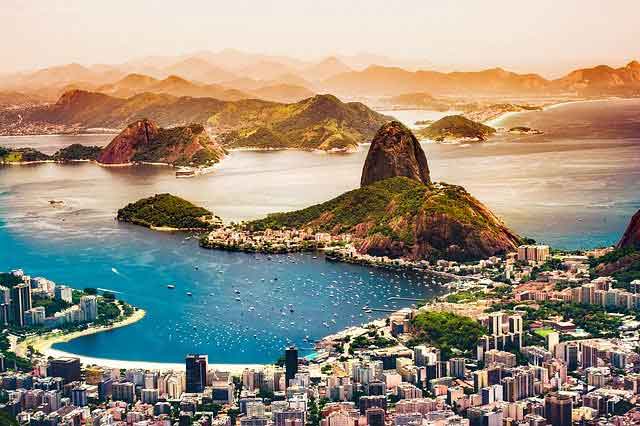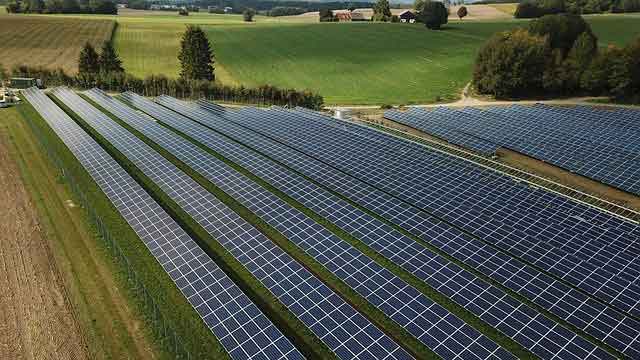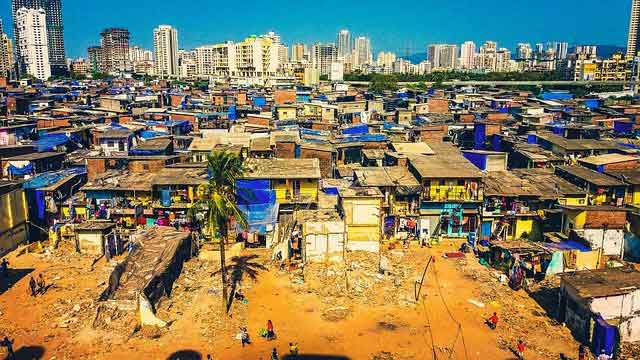Fragmented infrastructure hurt economic growth and quality of life in urban areas. These structures are easily vulnerable to extreme weather conditions. Besides, the dramatic climate change effects like floods in Germany and China create urgency to address urban infrastructural issues. On the other hand, the COVID-19 pandemic also showed how cities were unprepared to face an outbreak and contain it. Every disaster provides an opportunity to build a more resilient future.
Most affected urban areas are often related to poverty. Since these areas are usually more prone to maximum damages during a hazard. And when disaster strikes, they are often less resilient to the effects of the disaster. Moreover, they are also less prepared or less accessible to get financial support.
Future risks need to be mitigated through preparation, response, and implementation of policies and strategies. Sustainable urbanism is significant to transform urban areas and increase environmental value. This will help to achieve UN SDG goals and other global initiatives.
The 9th Goal of UN Sustainable Development aims for a more resilient infrastructure that supports the economic and social well-being of people. In addition, it focuses on supporting inclusive, sustainable, affordable, and equal access to all.
With over half of the global population living in cities, building a resilient city is critically necessary. A resilient city will tackle climate change effects and improve public health.

Unplanned and Planned Urbanism
Environmental sustainability is important to offer resilience against any environmental threats. It is often affected by urban sprawls, pollution, degradation of land use, overconsumption of resources and habitat loss. These are results of unplanned and unmanaged urban areas. Slums, illegal settlements, and farmland conversions are some of the unplanned urbanizations. These factors reduce the environmental value in cities. And reduce the resiliency against natural disasters.
On the other hand, planned urbanization includes ways to mitigate these urban issues. This includes the opportunity to innovate energy, resource efficiency, changes in human behaviour and urban lifestyle. Moreover, planned urbanism will provide enhancements that improve public health and well-being. Solar housing settlements, net-zero homes and people prioritized urban areas are examples of planned urbanization. These improve both the public and planet’s health through sustainable initiatives.
1. Inclusive of Nature-based Solutions
Sustainable urban development ensures it can adapt and mitigate climate change effects.
Heatwaves, floods, and droughts are some of the harsh environmental effects seen in cities. Many of these could be mitigated through nature-based solutions. Increasing tree cover and offering shade could reduce the effects of heatwaves. Maximizing open green spaces and wetlands could mitigate both floods and droughts.
While enhancing green spaces, the need to address inequality is important. Several poorly urbanized regions lack green spaces. To create a sustainable city, including every urban resident and area is key to improve the environmental value of cities.
Blue-green infrastructure offers a simple and effective way to tackle environmental issues in cities. However, this sort of development is most often ignored due to land competition. Therefore, putting in policies to preserve, conserve and maximize blue-green facilities will improve environmental sustainability.

2. Restore water bodies for sustainable development
Water plays a significant role in maintaining and restoring the ecological balance. This comes from water bodies like rivers, lakes, wetlands, and ponds. However, water management is poor in several urban areas especially emerging cities. Floods and droughts add to the climate change effects in urban areas.
Water pollution, contamination of groundwater and destruction of wetlands are some common water management issues. This has led to less availability of drinking water and the decline of habitats living in the water.
For a sustainable development, is important to conserve, manage and distribute water inefficient way. Restoring water will enable cities to have enough drinking water and recharge the groundwater levels. Moreover, water bodies can manage floods and support natural habitats. This will create a more resilient and sustainable development in urban areas.

3. Urban Greening Initiatives and Green Policies
Green initiatives have several benefits in improving various development plans. From local plans to large-scale projects, green policies play a crucial role in improving sustainability. Moreover, they mainly support in reducing climate change effects.
To support and maximise green fuel, the government needs to remove fossil fuel subsidies to decrease their consumption. And at the same time increase investments in green alternatives like renewables. Fossil fuel subsidies that amount to $240 billion a year could be used to fund renewables.
The transition to renewable is much needed to reduce harsh climate change effects that stem from fossil fuel use. Furthermore, facilitation of green fuel is possible but restricted due to unclear goals and implementation.
Globally, it is significant to reduce carbon emissions through green policies and strategies. This will support reducing global warming to 1.5oC by mid-century. Limiting greenhouse gas emissions will help reduce adverse climate change effects that comes from rising temperature.
Cities must prepare to be resilient against these effects. Zero-carbon solutions and carbon neutrality targets are already being practised by many cities. Expanding similar goals to many parts of the world will help build resilience. This includes emerging countries that lack resources and necessary infrastructure.
For sustainable development, global cooperation and support are necessary to achieve global temperature goals and tackle climate change.

4. Addressing informal settlements
Slums and informal settlements are often the most affected by destructive hazards. More policies and support are necessary to improve their living conditions. Moreover, urban services are often neglected in these areas.
While many improvements have been made in the past, more action must be done. As climate change effects intensify, it is highly significant to improve their living conditions and mitigate environmental problems.
Sustainable Development requires equitable access to all, which includes support for informal settlements in cities.

5. Resilient developments to mitigate climate change
Resilient infrastructure is the capacity of structures to resist, adapt to changing environments and restore positively from any climate change conditions now and in the future.
A resilient city will enable the smooth operation of urban services even during a hazard. Transportation, communication, the flow of goods, energy and water facilities are provided as normal as possible. Moreover, it ensures the health and wellbeing of the people, avoids heavy economic loss, and protects the environment.
Critical infrastructure protects people from several hazards. As climate change effects intensify every year, resilient infrastructure is required to ensure the safety of residents. This relies on infrastructure resilient to natural disasters like earthquakes, floods, and storms. Moreover, this includes climatic effects like a rise in sea levels and global temperature rise.
Read More: 10 Effects of Climate Change on the Environment
These climate change issues create an urgent need to address them with a more resilient infrastructure. Especially low-income housing structures and vulnerable areas need resilient structures that can mitigate any hazards.
Most affected areas due to hazards require a unique infrastructural standard for improved resiliency.


